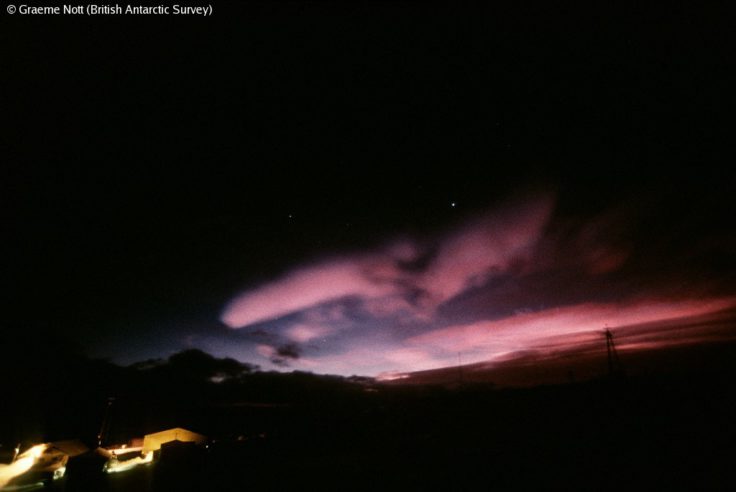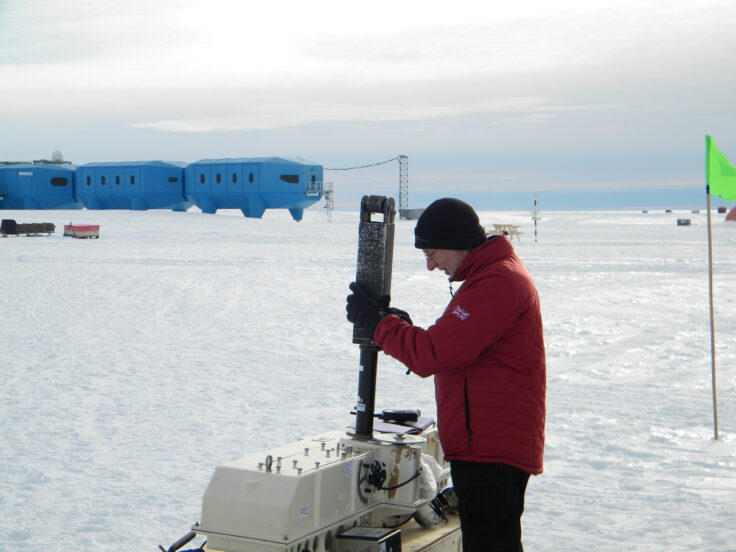World Ozone Day – 16th September
The 2018 ozone hole began forming in late August and won’t reach its largest for over a fortnight. Already it covers most of the Antarctic continent, an area of 14 million square kilometres. Measurements at Rothera station showed that ozone values started to drop from late July as sunlight began to illuminate the stratospheric clouds (aka ‘mother-of-pearl’ clouds) that formed over the winter. This kicked into play photochemical reactions that are destroying ozone at about 1% a day.

This chemistry originates with chlorine from CFCs and allied chemicals as well as bromine from halons used in fire-extinguishing systems. Release of such ozone destroying substances is restricted under the Montreal Protocol, which was first signed on September 16, 1987 – World Ozone Day. Overall the Protocol is working well, with the amount of ozone destroying gasses in the atmosphere going down. Due to some recent illegal manufacture and release they are not dropping quite as rapidly as predicted, and we are likely to have Antarctic ozone holes for another 50 years or more.
Halley station, where the ozone hole was discovered by BAS scientists, is currently a summer-only occupied station, but an automated Dobson spectrophotometer was successfully trialled there last Antarctic summer and is currently undergoing further tests in Cambridge. Once operational in Antarctica the instrument will provide the much needed ground truth for satellite observations and continue the long series of observations that led to the discovery of the ozone hole.
BAS Meteorologist Jonathan Shanklin – one of the team who discovered the ozone hole back in the 80s – was at Halley during the 2017/18 Antarctic summer and worked on the calibration of the automated Dobson. He says: “The automated instrument is a great improvement on the manual technique – it keeps going 24 hours a day during the summer, which no human observer could do!”

For more information please visit https://www.bas.ac.uk/data/our-data/publication/the-ozone-layer/
Notes:
- The Dobson spectrophotometer is named for the Oxford professor of physics who in the 1930s designed what is still a world standard instrument for measuring ozone.
- The Montreal Protocol was strictly first signed between September 14 and 16.